The Inca Trail to Machu Picchu is a bucket list trek, which takes you through breathtaking landscapes and ancient ruins, offering a deep connection to the rich history and culture of the Inca civilization. Over four unforgettable days we walked through a blend of natural beauty and historical wonders that left a lasting impression. By the end of this journey, organized by World Treks, we had gained a deeper appreciation for why Machu Picchu stands as one of the modern wonders of the world. I truly believe that the Incas discovered a heavenly location, surrounded by mountains, greenery, clouds, birds and butterflies — truly magical!
In short, the 4-day Inca Trail hike was an incredible adventure, a dream come true, offering a profound connection to the ancient Inca civilization and the stunning natural beauty of Peru. Each day brought new challenges and rewards. The most physically demanding part was on the second day, ascending to the Dead Woman’s Pass at 4215 meters. It’s funny how on the high-altitude days I always start contemplating my life decisions, but when I reach the top, the breathtaking views and sense of accomplishment make it worth every gasping breath.
Of course, staying unbathed for four days added to the adventure. By the end of the trek, we all shared the same layers of dust and sweat, but surprisingly, nobody cared. The trek is so fulfilling with images and knowledge throughout that it leaves no room for any complaints.
Let me share in more detail my experience of those four magical days leading to Machu Picchu. From Ollantaytambo, it was a 45-minute drive to the Inca Trail starting point, which is also called Piscacucho or Kilometer 82. We arrived at a large parking lot, where other trekking groups were also preparing. We still had to check in and show our passports and tickets provided by the trekking company. We spent around 30 minutes here with a chance to use the restrooms, check our backpack, get our trekking poles, put on sunscreen, and also get introduced to our amazing crew of porters. Notable also are the high-quality services provided by the porters, ensuring our journey was as comfortable as possible, with delicious meals that were nothing short of gourmet—an unexpected treat in the wilderness. After checking in, our guide gave us a tour of the small museum on-site, which introduces some of the plants, animals, and history of the Inca Trail and the Andean Milky Way, preparing us for what was coming our way!
Day 1: Beginning the adventure
Starting Point: Piscacucho (Kilometer 82)
Altitude: 2800m
Our adventure began at Piscacucho, also known as Kilometer 82, situated at an altitude of 2800 meters. Taking a picture next to the Camino Inka sign is a must for every hiker, marking the beginning of this 4-day journey. Crossing the first bridge over the Urubamba River filled me with excitement for what lays ahead.
On the first day, we traversed breathtaking landscapes, passing small villages with rest stops that provided bottled drinks and restroom facilities. The trail on this first day was relatively gentle, allowing us to settle into the rhythm of hiking while admiring the diverse plants and flowers along the way.
We reached a lookout point offering views of the first major ruin of the Inca Trail: Llactapata (also known as Patallacta). This terraced hillside, which was once a food production site for Machu Picchu, is bordered by a river and features an east-facing circular structure reminiscent of Machu Picchu's Torreon (Sun Temple). Llactapata stands as the first significant archaeological site on the Inca Trail, visible from another set of ruins known as Willkaraqay (Huillca Raccay). While the trail then continues into the wild, I suggest looking back for Veronica Mountain (Wakay Willca), which is clearly visible up to a certain point on day one.
After lunch, our journey continued to Wayllabamba, at an altitude of 2974 meters, our final destination for the day. Our first night's camp was set in the backyard of a local house, surrounded by lush greenery and the occasional presence of chickens and donkeys. Unexpectedly, this setting provided a restful night's sleep, preparing us for the adventures yet to come.

Day 2: Conquering Dead Woman’s Pass
Maximum Altitude: 4215m
Campsite Altitude: 3596m
Day 2 is known as the most challenging day of the Inca Trail, and that is correct. After a good night’s rest, we started early, leaving the villages and farmlands behind as we ascended into the subtropical forest. Our first major stop was Llulluchapampa, at 3800 meters, where we had some rest but decided to skip lunch and continue the trek. From here, we had our first view of Dead Woman’s Pass, which we would soon be summiting.

The real challenge began as we started our steep ascent towards Abra de Warmihuañusca, or Dead Woman’s Pass, the highest point on the trail at 4215m. I’m sure you're wondering why it's called Dead Woman Pass—I had the same question. The pass gets its name from the mountain's unique shape, which resembles a woman lying on her back, gazing up at the sky.
The climb was long and tough, with every step testing our endurance and willpower. I honestly don’t know how long it took me to complete, but it felt never-ending! But who are we to complain? While struggling, puffing, and resting along the trek, the porters, the real heroes, would pass carrying the necessary equipment for the trekkers on their backs, but still kept their smiles and gave a word of encouragement to every trekker, simply admirable. Reaching the top, the sense of accomplishment was indescribable — a mix of exhaustion, happiness and pride.
After a short rest and taking many photos, we began a very long and steep descent, covering around 500 meters in just two kilometers! The rocky and uneven steps highlighted the importance of trekking poles as we reached our campsite at Pacaymayo, where we finally rested at an elevation of 3,596 meters.
Day 3: Exploring Inca Ruins
Maximum Altitude: 3960m
Campsite Altitude: 2670m
Day 3 is considered the best day of the hike, filled with stunning scenery and fascinating ruins. We visited some of the most impressive ruins and entered the jungle part of the trek. Despite its reputation for being easier, it was really challenging due to the continuous ascents and descents over approximately 16 kilometers.
After an early breakfast, we walked to the beautiful Inca site of Runkurakay at 3760 meters. This small, circular ruin is estimated to have been a watchtower or a resting place. Today was cloudy, so the views weren't very clear, but being surrounded by the clouds was truly amazing!
We then continued to Sayacmarca, one of the most picturesque ruins on the trail, located on a rocky area with an impressive view of the Aobamba Valley. Unfortunately, the clouds were still following us so we didn't get chance to admire the view, but we scrolled around this enchanting ruin known for its narrow stone steps and maze-like layout, offering insights into Inca architectural skills.
The path from Chaquicocha, which means "Dry Lake" in Quechua, to Phuyupatamarca is one of the most beautiful sections of the trail. It is filled with orchids, hummingbirds, and stunning views of the Sacred River, the Willka Mayu. Along this part of the trail, we came across natural caves and tunnels carved into the rock, along with more jungle flora, which made the journey even more intriguing.
Arriving at Phuyupatamarca, rightfully known as the "town in the clouds," we took a break to admire its well-preserved terraces and ceremonial baths. This site features terraces and water channels, testament of the Inca's advanced engineering skills.
We then continued to the Intipata archaeological site, known for its extensive agricultural terraces and breathtaking views. The terraces at Intipata were likely used for agricultural purposes, reflecting the Inca's advanced agricultural knowledge.
Descending through the cloud forest, we reached Wiñay Wayna, our final campsite. The name Wiñay Wayna means 'Forever Young' in Quechua, and the site's complex terracing, buildings, and water supply systems showcase the Inca's expertise in landscaping. The nearby Wiñay Wayna ruins, with their breathtaking views, were a highlight of the entire trek. Each step was a reminder of the spirit and skilfulness of the Inca civilization. Day 3 was the only day we experienced some rain, but being literally among the clouds during our visits to all the archaeological sites added a dramatic touch to the views.
Day 4: The final stretch to Machu Picchu
Maximum Altitude: 2730m
We woke up very early on the final day because we were advised to hurry to get to the control gate of Wiñay Wayna to take our place. Although we were camping only 100-200 meters away from the gate, we were, of course, late, but this did not affect anything. After passing through the control, during the first part of the trek, the surroundings offered an incredible sight while watching the sunrise between the mountain peaks and clouds.
Reaching the Sun Gate, the final part of the trail offered us the first glimpse of the enchanting Machu Picchu, standing at 2430 meters. The first rays of sun lighting it up created a moment of awe that made all our efforts worthwhile. We were so lucky to have perfect weather conditions! The iconic view of this ancient city, nestled amidst lush green and mountains peaks, took my breath away.
After registering at the entrance to Machu Picchu and leaving our backpacks, we started our guided tour of the historic sanctuary. Our guide led us on a 2-hour walking tour of Machu Picchu, unravelling the mysteries and stories of this magnificent site. Built in the 15th century and abandoned just over 100 years later, Machu Picchu, often called the "Lost City of the Incas," seamlessly blends with the natural landscape, serving today as a testament to the architectural and engineering skills of the Inca civilization. The experience was both humbling and inspiring, a perfect closing to our 4-day journey. Standing thousands of meters above sea level, I took in the breathtaking views and the profound realization that I was actually standing there, witnessing one of the wonders of the world.
An important thing to know is that Machu Picchu allows visitors to arrive by train, which significantly increases the number of people and makes the site much more crowded. Each day, over 2000 tourists visit Machu Picchu, with many arriving by train from Cusco or the Sacred Valley. This, combined with hikers completing the Inca Trail, often results in the site feeling bustling and busy, especially during peak visiting hours, which was completely opposite to what we experienced during the first three days of the hike.
As we departed for Ollantaytambo on a scenic train ride, I carried with me more than memories of stunning landscapes and ancient ruins. The Inca Trail had been a journey of struggle, inspiration, and learning—a test of both physical and emotional endurance. I was left with not only unforgettable memories but also a profound appreciation for the history, culture, and spirit of the remarkable Inca civilization. The Inca Trail is more than just a hike, it is a journey through history.

Next stop: Continuing the adventure in the Peruvian Amazon! Stay tuned for more explorations and discoveries!


























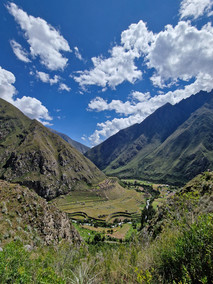





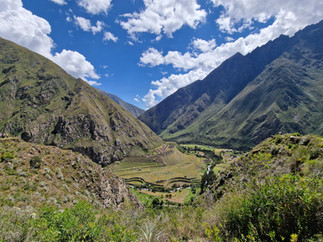



































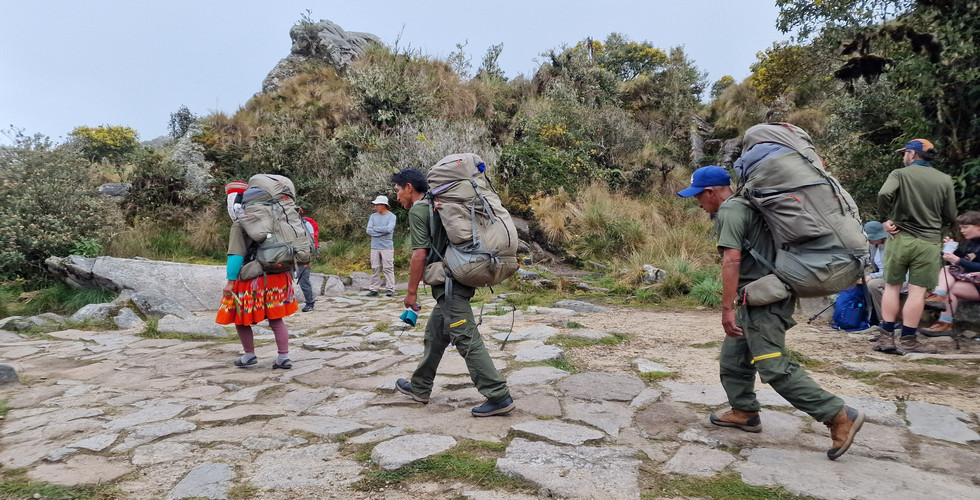











































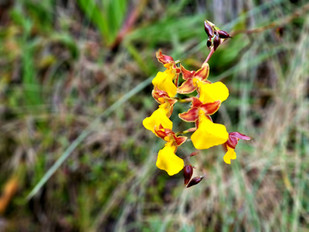

























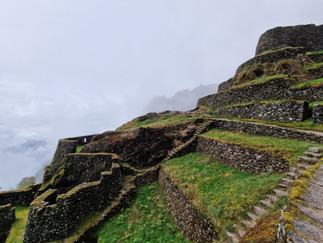



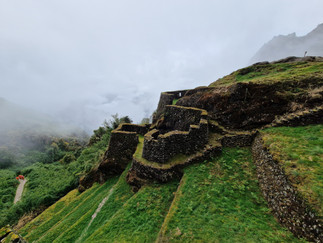























































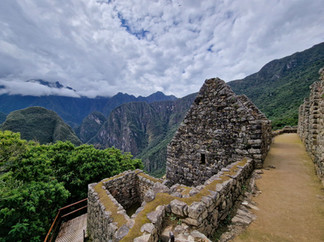





















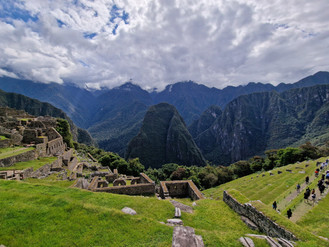









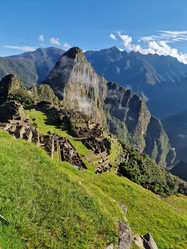
Comentarios